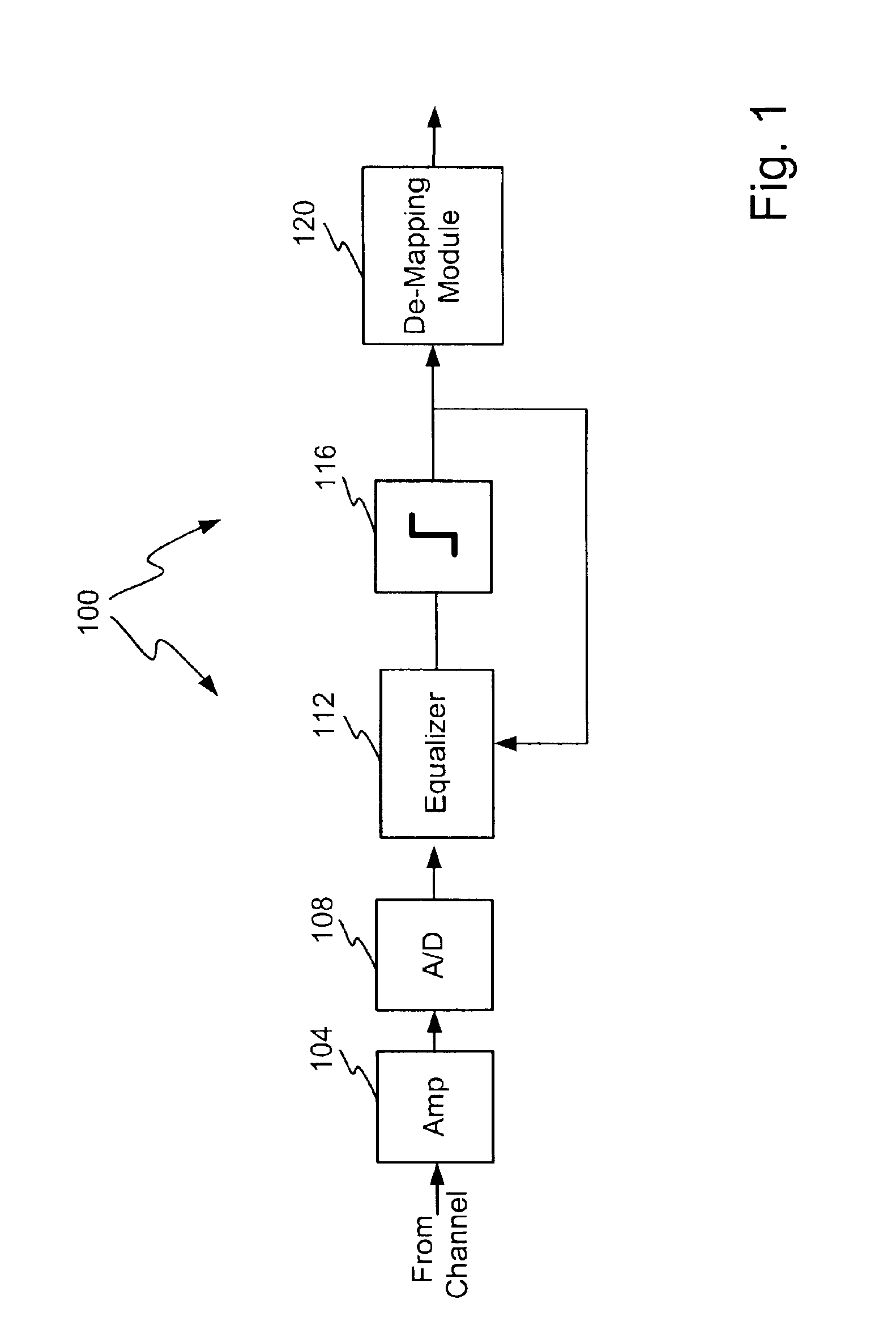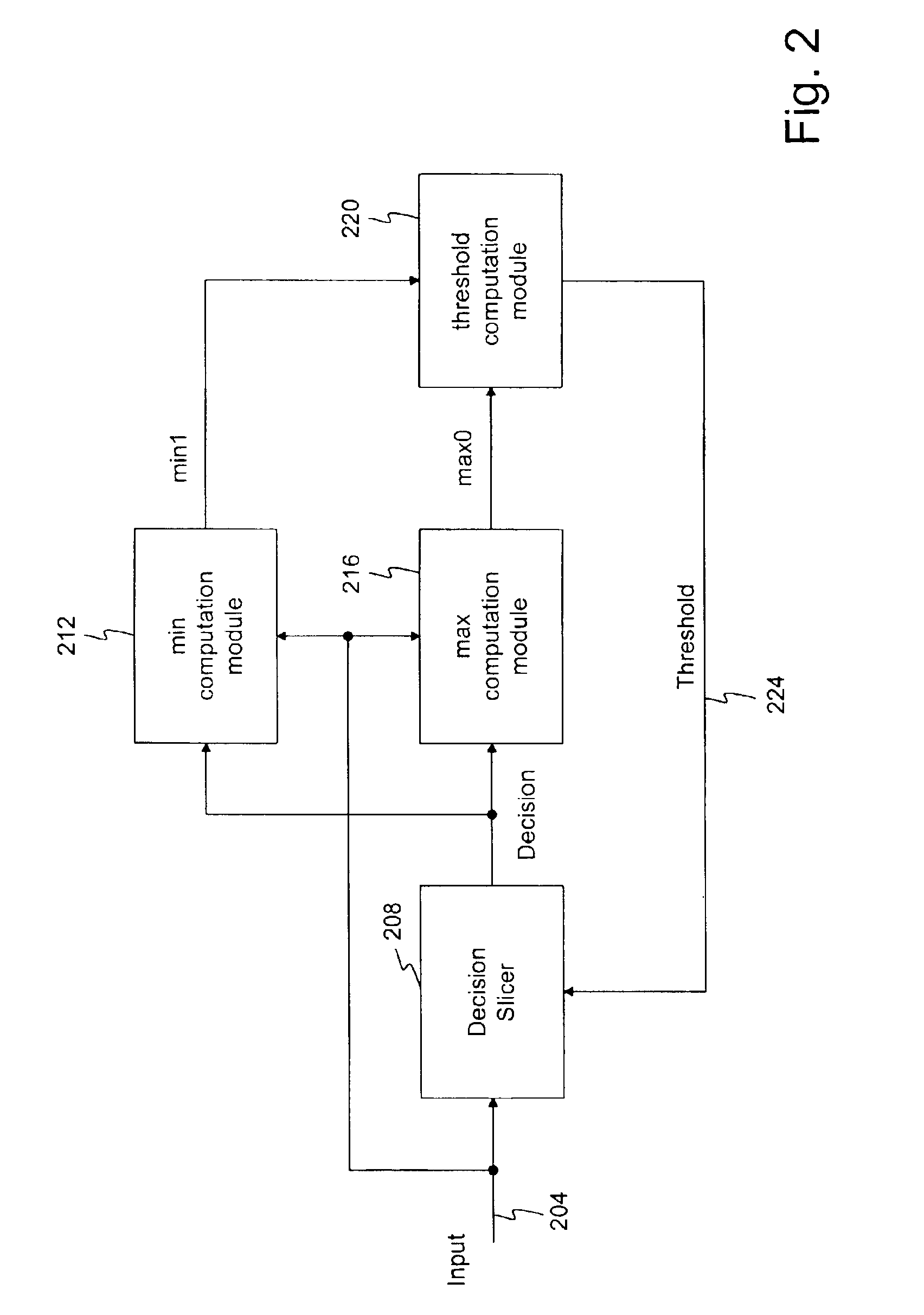Adaptive decision slicer
a decision slicer and decision technology, applied in the field of communication systems, can solve problems such as signal degradation, signal decoding difficulty, inaccurate decision, etc., and achieve the effect of accurate decision device operation
- Summary
- Abstract
- Description
- Claims
- Application Information
AI Technical Summary
Benefits of technology
Problems solved by technology
Method used
Image
Examples
Embodiment Construction
FIG. 1 illustrates an example environment for one embodiment of the invention. This example environment is provided for purposes of discussion and understanding. The invention should not be considered to be limited to this particular environment or field of use. As shown, a receiver 100 comprises an amplifier 104 configured to receive an input from a channel. The amplifier 104 increases the signal magnitude, which may have been attenuated by the channel. The output of the amplifier feeds into an analog to digital converter (A / D) 108, which operates in a manner known in the art. The output of the A / D 108 may connect to an equalizer 112 that is configured to counter the effects of transmission through the channel. The equalizer may comprise any form of feed-forward equalizer, a decision feedback equalizer or any type or number of equalizers or devices configured to compensate for the effects of the channel.
The output of the equalizer 112 connects to a slicer 116. The slicer 116 operat...
PUM
 Login to View More
Login to View More Abstract
Description
Claims
Application Information
 Login to View More
Login to View More - R&D
- Intellectual Property
- Life Sciences
- Materials
- Tech Scout
- Unparalleled Data Quality
- Higher Quality Content
- 60% Fewer Hallucinations
Browse by: Latest US Patents, China's latest patents, Technical Efficacy Thesaurus, Application Domain, Technology Topic, Popular Technical Reports.
© 2025 PatSnap. All rights reserved.Legal|Privacy policy|Modern Slavery Act Transparency Statement|Sitemap|About US| Contact US: help@patsnap.com



